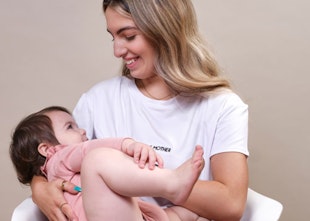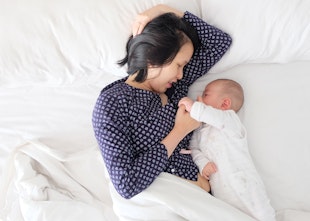Do you know how to look after your baby's umbilical cord whilst it is falling off?
The umbilical cord is a flexible cordlike structure which connects a baby in the womb to its mother. It carries essential nutrients and oxygen from your placenta directly into your baby's blood.
It's fascinating really.
Shortly after you deliver your baby, a clamp will be placed on their umbilical cord, roughly 5cm from the belly button. A plastic white clip will then be secured further up the cord.
The cord is then cut leaving a small stump. This procedure is not painful for you or your baby as there are no nerve endings in the cord.
On average, an umbilical cord stump should fall off between 5 to 15 days after birth.
However, it is essential that you take care of the stump and clean your baby's umbilical cord in the first weeks following birth.
Until the stump drops off naturally and the button is completely healed, it is important to keep the area dry and clean to prevent infection.
Taking care of your baby's umbilical stump:
-
Keep it clean at all times.
If the base of the cord looks sticky, dab it gently with a washcloth containing only cooled boiled water and pat dry with a dry cloth or cotton wool. Remember to wash your hands before and after you touch the cord.
-
Keep the stump dry.
Help the umbilical cord dry out quicker by regularly exposing it to air.
![How To Take Care Of Your Baby]()
-
Avoid water.
If you choose to bathe baby in the early days, don't dunk baby's naval underwater - wait until the stump falls off. For now, stick to sponge baths.
-
Don't cover the stump.
Most, if not all newborn nappy brands feature little flaps at the waistband allowing you to fold down the front of the nappy to avoid covering the stump. If the stump gets wet or damp, it will take longer to heal or may become infected. Clean the skin around the belly button each time you change your baby’s bottom.
-
Keep baby comfortable.
Avoid tight-fitting clothes that may rub off or press against the stump.
-
Don't pick.
Let the scab fall off naturally, even if it looks like it is only attached by the smallest piece of thread. If it comes off too soon, it may start bleeding.
If at any time you notice bleeding or discharge from your baby's belly button, ask your community midwife or public health nurse for advice
However, if you discover any redness around your baby's belly button or if there is a foul smell, consult with your GP without delay.








